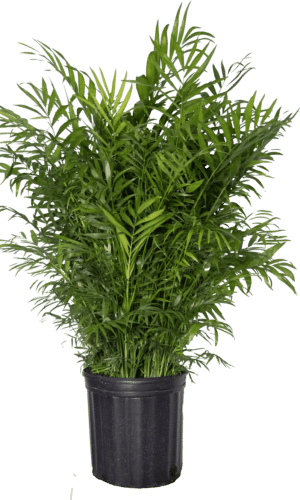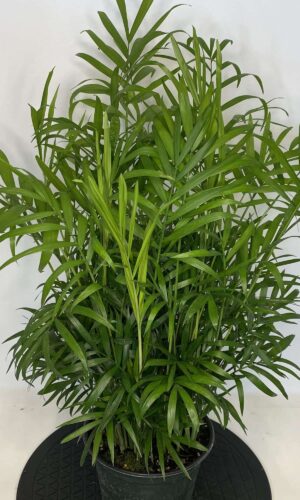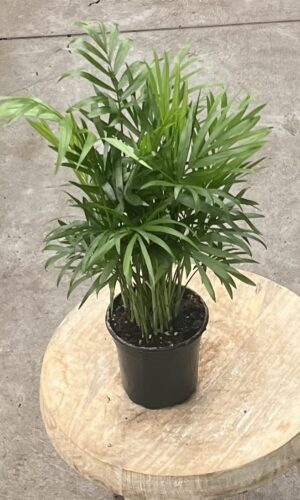Whether you call this plant by its scientific names, Chamadorea elegans, Neanthebella Palm, or by its nickname, Parlor Palm, this compact, dark green, indoor palm with long graceful fronds is a fabulous green friend that does well in almost all locations.
Parlor Palms can grow in low light, but prefer medium indirect light. Avoid putting them in bright light and direct sun.
Water a Parlor Palm well, and then allow the top 50% of the soil to dry out before watering again. When in doubt, do not water! Water even less during the winter when the plant is not actively growing. Brown leaf tips often indicate over watering, while yellow fronds tell you the plant needs a bit more water.
Basic home and office temperatures: 62°-82° F (16.7°-27.8°C).
Parlor Palms prefer high humidity. Dry air encourages spider mites to attack the plant.
As a Parlor Palm matures, and under ideal growing conditions, it sometimes produces stalks of small inconsequential yellow flowers followed by seeds. These seeds cannot be used to propagate a new plant since they are not fertile. I always cut the stalk off as soon as it appears.
Parlor Palms attract scale and mealybugs, but it is spider mites that are most common, especially when the air is very dry during the winter. These annoying pests suck the color out of the fronds. An insecticidal soap can be used to treat them.
Parlor palms get fungal and bacterial diseases such as leaf spot and root rot. Most times these are caused by an over watering problem.
Parlor Palms like to be a little root bound so don’t rush to put them into larger containers. There should always be drip holes in any pot you use.
Remove only the parts of the plant that turn brown or yellow as soon as they appear. A parlor palm grows from a terminal bud. Cutting off this terminal bud will prevent new growth. Cut frond (leaves) only. Do not cut the stems.
Parlor Palms are considered Clean Air Plants and remove harmful chemicals from the air.
A Parlor Palm in a non- poisonous houseplant.



